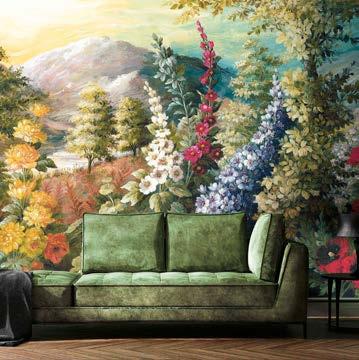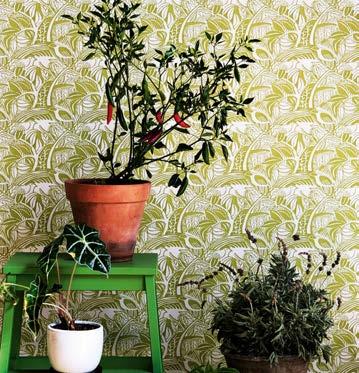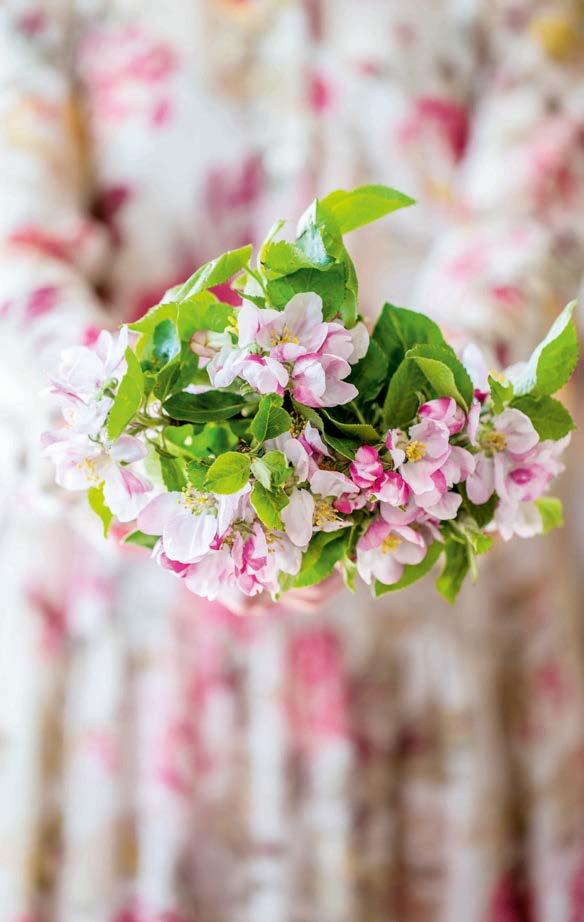
7 minute read
NATURAL CONNECTION Decorating ideas for orangeries and conservatories
Natural CONNECTION
Decorate a garden room, whether a conservatory, orangery or even a greenhouse, to provide an enjoyable space that bridges interior and exterior
Agarden room provides a natural link between a home and the green space beyond. It could be a conservatory in which to relax, an orangery designed for everyday living, or a greenhouse that doubles as a dining room in summer. Glazed structures like these create an extension to the home, a half-way space where house and garden, inside and outside, come together. Whether used year-round or only during warmer months, garden rooms can provide a sanctuary to retreat to, a practical well-lit place to read or paint in, or a space in which to socialise. However they are to be used, they can offer the perfect canvas on which to experiment with a more adventurous approach to interior design, introducing bolder patterns or furniture styles than elsewhere in the home. Often, the best sources of inspiration are the verdant plants and colourful blooms in the world outside. Being influenced by them can result in a pleasing synergy between interior and exterior zones.
ABOVE Blinds in Manilla embroidery, £69 a metre, all other fabrics and wallpaper all Glass House collection, Sanderson
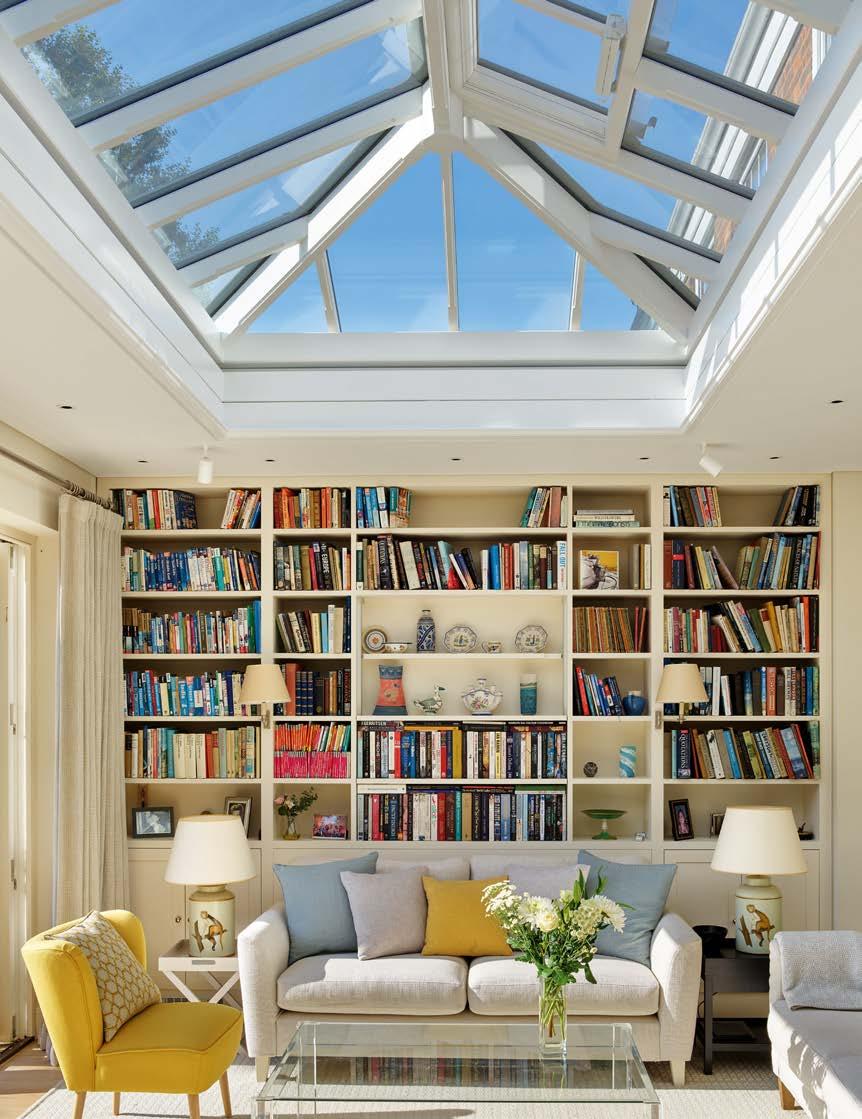
Style Notes
• Consider how the space will be used, year-round • Create a connection between inside and outside, as well as with exisiting interiors for flow

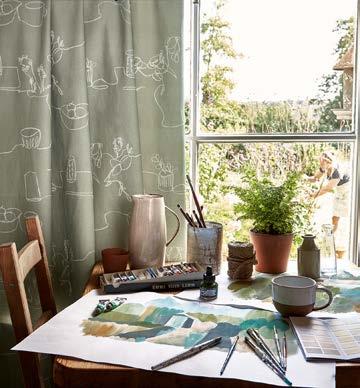
TOP An orangery from Vale Garden Houses provides an extra sitting room. ABOVE A garden room provides the perfect space for enjoying a hobby. Curtain, Tabletop Lichen, £31.50 a metre, Villa Nova
A MATTER OF CHOICE
Many properties already have a garden room or conservatory, but, for those thinking about adding one, there are many different options to consider.
A classic conservatory with glazed walls, either floor to ceiling or half bricked, perhaps with a glazed or partially glazed roof as well, can be built in keeping with a particular period style. “It is important the design of a conservatory is sympathetic to the existing property in terms of both its size and its architectural detailing,” says Lisa Morton, director of Vale Garden Houses. “Mixing architectural periods would be frowned upon, unless the period of the property is less clearly defined, with additions or alterations made over the years, and it can take a more relaxed approach.” For a more contemporary aesthetic, clean-lined unfussy extensions with glazed walls are a popular option, perhaps including bi-fold doors and a roof lantern.
Greenhouses, too, can double-up as living spaces in the warmer months. “In recent years customers have shown a preference for lean-to and abutting structures so they can walk in seamlessly from their living space,” says Tom Barry, managing director of Hartley Botanic. “We see customers using their greenhouses for relaxation, dining and exercise. The environment of a greenhouse is extremely calming, allowing you to both fully take in your garden and be surrounded by the plants you are growing.”
John Lawson, sales director of Alitex, has also observed this shift, but cautions that single-glazed greenhouses are designed with

plants in mind and will be too cool for comfort through the winter months.
Stylist and author Selina Lake is full of enthusiasm, though. “There is something a little magical to me about spending time in greenhouses,” she says. “Due to their very purpose, they are warm spaces to hang out in, and being surrounded by plants makes them an ideal structure to just be in. A perfect example of how a practical space can still be appealing and inspiring.”
For those seeking a year-round living space, particularly for dining or a home office, a conservatory with heating for winter and ventilation for summer is usually the best solution. Something else to consider is a true ‘garden room’ – a structure built apart from the main house: the ideal place for teenagers or grown-up children, a home office, or gym.

ABOVE LEFT Indooroutdoor fabrics are stylish and practical for a garden room. Selection from Landmark Textures collection, Thibaut ABOVE This citrusinspired wallpaper design is perfect for an orangery. Wallpaper, Orange Blossom, £115 a roll, Cole & Son RIGHT A part-glazed roof and bifold doors offer abundant light. Henley Ceramic Slate and Aluminium dining table with eight Cliveden dining armchairs, £6,699, Bridgman

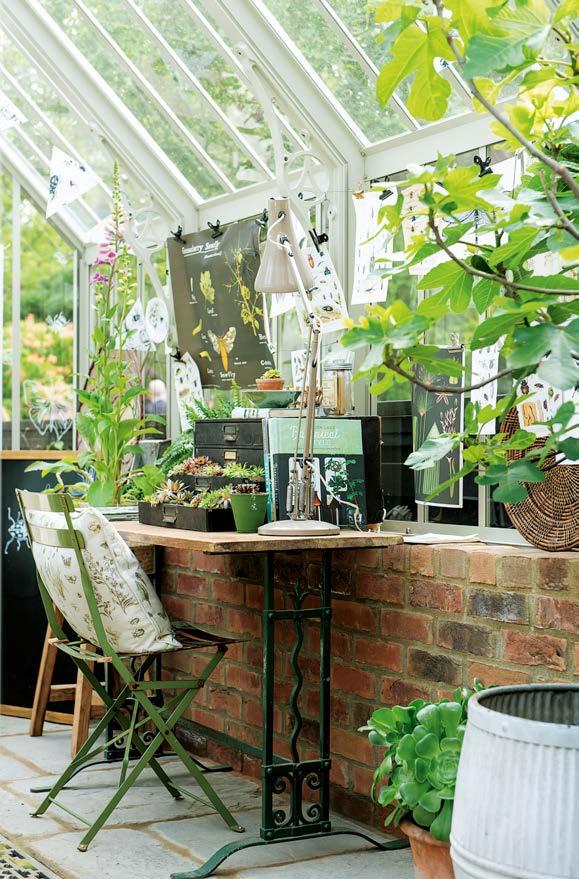
ABOVE Stylist Selina Lake has decorated this Alitex greenhouse with an abundance of flowers, echoed in floral cushions. Mismatched chairs and lighting from Rothschild & Bickers make it a wonderful setting for dining. LEFT Here, insects and plants are Lake’s inspiration for a home office or hobby space within a traditional glasshouse from Alitex.
BRING THE OUTDOORS IN
Once a structure is chosen and its purpose defined, the pleasure of decorating and furnishing can begin.
“When designing a garden room, it is important to consider the viewpoints and incorporate colour schemes which work well with the outdoors,” advises interior designer Emma Sims-Hilditch. “Greens, blues, sunny yellows and neutral tones are all timeless choices which will complement the garden space.”
If there are walls that can be papered, a botanical motif that ties in with the external surroundings can work well. From small-scale florals or leafy patterns to grander mural-like papers, there is a plethora of designs to pick from. This can be an opportunity for a little fun, perhaps evoking a tropical mood with rainforest creepers, palm fronds and exotic blooms, with luscious greens and flashes of bright colour. Some papers evoke a Mediterranean feel or a classic ‘hot house’ look, recreating the aesthetic of a greenhouse within an orangery or conservatory.
Style Notes
• Take inspiration from nature to blur the boundaries between interior and exterior • Use botanical or floral designs, native or exotic, on walls and fabrics • Seek natural textures such as grasscloth to echo the garden • Accessorise with plants and flowers
RIGHT Tiles are a practical choice in greenhouses or conservatories, adding colour and pattern too. Turquoise Dreams encaustic cement tile, £160.80 a square metre, Otto Tiles BELOW A ‘hot house’ look has been created with a large-scale design used as a screen in a large glass house. Palm House, £245 a roll, and fabrics, Osborne & Little
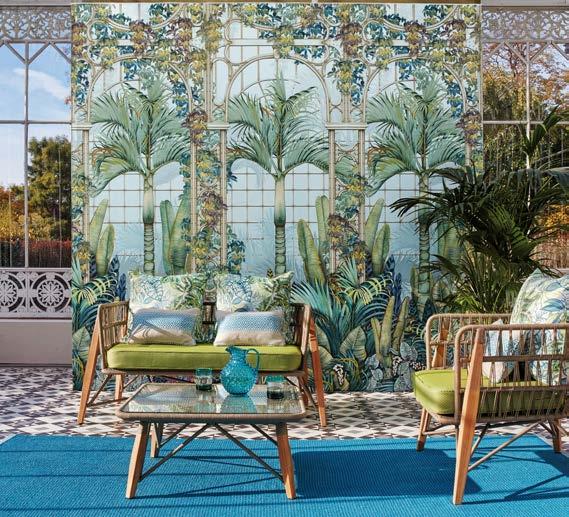
In a greenhouse, plants provide the natural decor perhaps enhanced with playful soft furnishings. Selina Lake worked with Alitex to create a range of lifestyle settings within greenhouses. “Use cushions chosen to complement their surroundings and add floral pattern,” Lake suggests. “For a study area, let bees and other insects inspire a new greenhouse office scheme.”
Use vintage entomology prints on available walls, mixed with rustic secondhand furniture and metalwork painted green, then add lots of lush green plants, including succulents planted, for example, in a set of mini desk drawers. If window frames can be painted, consider soft green shades for a more seamless blend with the outdoors, or a soft neutral stone colour. It is important, also, to consider how a garden room connects to the rest of the house. Though a conservatory can feel like a separate area, if it flows from another room either in an open-plan manner or through glass, consider how the two zones can be integrated more cohesively. Interior designer Katharine Pooley suggests “using the same colour palette to really connect the space with the rest of the house, while also incorporating a variety of patterns and textures to add a layer of interest to the room.” Textured papers such as grasscloth can make a lovely choice for a neutral but interesting wall treatment with a tactile connection to the natural world.

RIGHT Create a backdrop full of colour with a mural featuring largescale blooms and an outdoor scene. Nirvana mural wallpaper, from £295, Woodchip & Magnolia BELOW RIGHT Echo native flora and fauna with a woodland design. Woodland wallpaper in Lichen, £69 a roll, Fiona Howard
